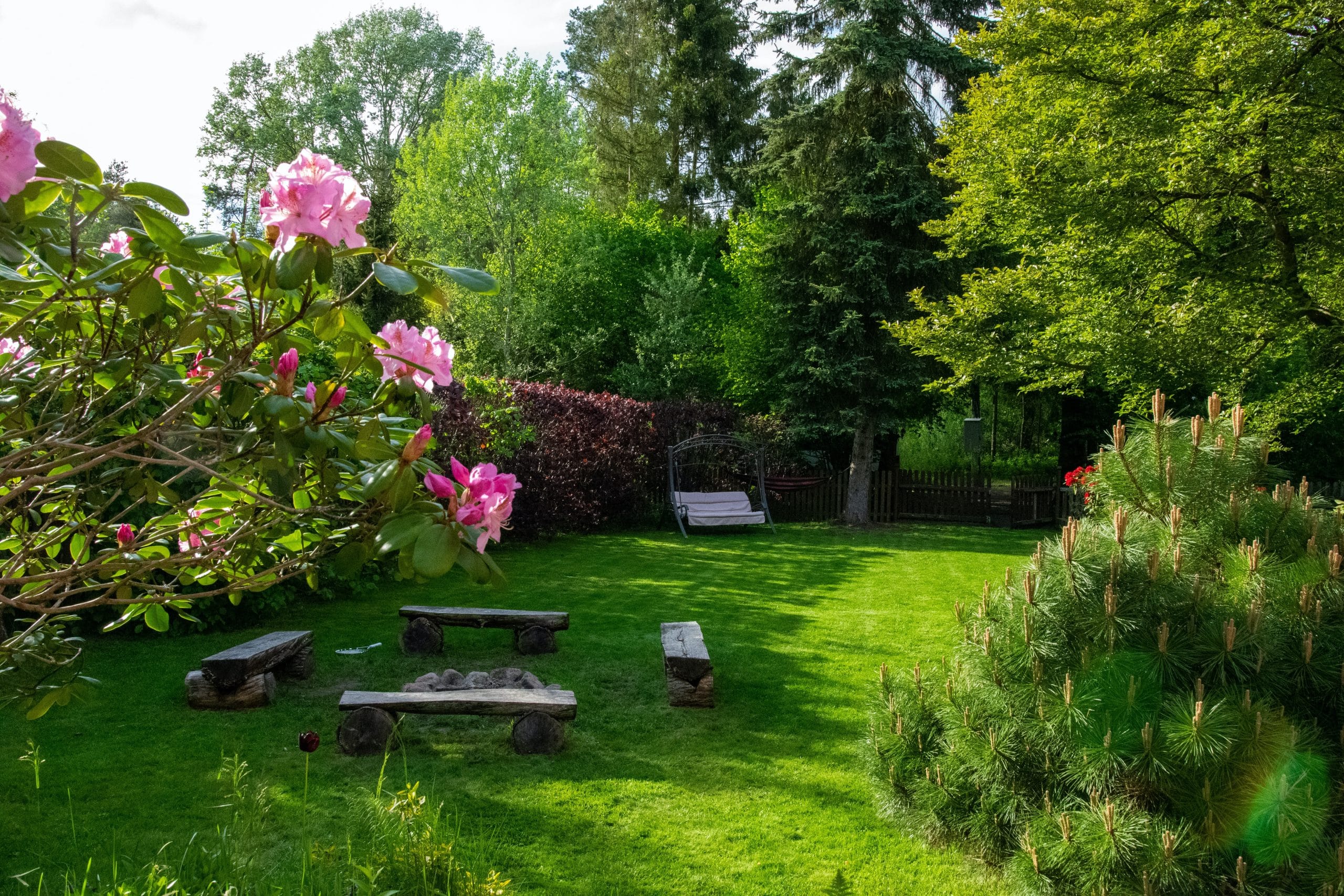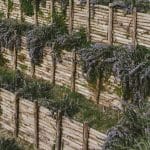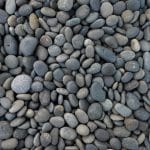Table of Contents
So, you’ve decided to turn that sod into a bed of blooming blossoms? Well, you’re in the right place. This guide’s geared towards you green thumbs itching to say goodbye to the plain, green sea and usher in a riot of colors and fragrances. Now, whether you’re all about manual labor or believe in letting gadgets do the work, options abound when it comes to ripping out the grass. You could heat things with solarization, use a helper such as a sod cutter, or even opt for the traditional shovel and sweat method. And hey, newspapers ain’t just for catching up on local happenings. They can help smother the life out of that carpet of green.
Reflecting on the Grass Removal for a Garden and Why It Matters?
Picture this: you’re looking out your backyard window, sipping on a cup of brew, staring blankly at an undisturbed expanse of dew-kissed lawn. Sure, grass has a calming, cookie-cutter appeal. But, ain’t that kind of boring? Now, isn’t the heart all aflutter at the thought of a garden, sporting a rich tapestry of wildflowers, succulents, and veggies? Sure it is, but you can’t just sow seeds over grass, right?
So grass has got to go. But, don’t just head out in a rush with a shovel, that ain’t how it’s done! First off, you need to rent a sod cutter. Now, this ain’t a fancy lawnmower, but a helpful tool that cleanly slices off the grass layer for easy removal. Plus, you won’t damage any hidden sprinkler lines or electric cables. To smother out whatever’s left, get your hands on lots of newspaper. It’s urban camouflage for your soon-to-be garden. Lay them flat on grass, wet them down, and let them do the smothering. Now wait, and watch the magic unfold.
The Critical Role of Stirring Up Your Lawn to Usher in a Garden
Stripping away the grass cover is like stirring a dormant beast. You’re unearthing all sorts of intricate, underground networks that, for years, have been undisturbed. But hey, once the dead grass is gone, new life can take hold. You’re bringing to light a complex ecosystem that will make way for a new variety of plants. So, go savage on that green carpet if you must, but remember to tread carefully, or you’ll disrupt the balance of things. Replace plastic sheets once the grass is dead, and you’ll maintain the quality of the soil for your upcoming garden.
Drawbacks and Benefits of Maintaining a Grass Lawn vs a Garden
Now, it ain’t all rainbows and roses. Sure, I love the scent of fresh-hewn grass as much as the next guy, but mowing’s a real chore. Ditching a garden for a manicured turf, though, has its perks. Takes less effort, for one. But remember, a garden ain’t just beautiful, it’s a whole different beast full of life, character, and charm. Plus, nothing beats the joy of biting into a juicy tomato that you’ve grown yourself.
Factors to Consider: Removing Your Grass vs Landscaping Over It
Now, before you run out with a shovel or sod cutter in hand, take a moment to think. Picture your future garden. Are you dreaming of a burst of floral colors, or a neat grid of raised vegetable beds? A whimsical forest bursting with life, or a minimalist zen-like oasis? Weigh what satisfies you more: the uniform, clean appeal of a well-mowed lawn or the unpredictable yet rewarding complexity of a blossoming garden.
You must also consider practicalities. Ya know, the mundane stuff. Like keeping in mind any potential underground dangers. We’re talking about utilities. Before any digging starts, remember to check with your utility company about the whereabouts of water pipes, electrical supply lines, or gas mains. You don’t want to risk damaging any of these; liability and injuries ain’t worth a garden, no matter how beautiful it may be!
Assessing the Practicality and Aesthetics of Grass Removal
Deciding to lose the lawn ain’t just about having a collection of your favorite plants. Practicality comes into play too. Let’s say you go ahead and strip off the turf using our guide. Strip it down to the bare soil, lay down a rich layer of compost, plant your beautiful seedlings or seeds, and wait. But then you are hit with an alien invasion of grass roots and weed seeds coming back alive. Serves you right for not knowing your soil well, and more so, not knowing your enemy well. That’s where a process called ‘lasagna gardening’ comes in handy. It allows nutrients to reach the soil and eliminates the need to remove the dead grass, just smother it real good and build atop it.
Determining Your Future Garden’s Specifications: Raised Beds, Flower Beds, and More
You’d think getting rid of grass was the hard part, right? Well, think again. Now comes defining your garden space. Are you into raised beds filled with your favorite veggies? Or do you fancy a flower bed adorned with a colorful variety of blooms? All this takes planning. Remember, as with all good things, a great garden needs time. Proper planning can enhance your experience by making it easier to smother grass and fully eliminate grass roots. And that’s where the joy of gardening lies, in watching your hard work bloom into a flurry of colors and life.

5 Effectual Methods for Removing Grass to Start a Garden
Right then, let’s break it down. There’s manual removal, where you engage in a turf-war, literally, with a sharp spade. Then there’s the kinder, milder method of layering sheets of newspaper or cardboard to smother the grass over time. Of course, there’s also the refined method of renting a sod-cutter to strip away the grass layer for a clean slate. Each method has its own charm, pick what suits your personality and watch your garden bloom.
Manual Grass Removal with a Shovel: A Test of Strength
Getting rid of that grass carpet for your dream garden ain’t gonna be a walk in the park, my friend. It’s a genuine test of strength and will that will require your physical stamina and a trusty flat shovel to get the job done. You’ve got to first water the area thoroughly a day before the D-day of grass removal; this reduces the bravado the grass could show in your garden spade. A sharp, flat shovel or garden spade, as they sometimes call it, makes the job a lot less daunting. Remember to draw the outline of your unwelcomed grassy patch like an artist does before he starts to paint. Then gently agitate that uppity edge of the grass pad in a move we professionals call ‘cutting parallel’. It’s about creating a gap between the turf and the goodness present in the soil. Slicing through the grass mat will kill grass in its tracks. Now, remember, this method to remove grass demands your effort, but my darlin’, you’ll see that it’s worth it in the end.
The Step-by-Step Manual Removal Process
We go knee-deep in removing the grass here. The process is labor intensive, relying more on manual labor than the convenience of machinery. It starts with watering the area the day before, giving the soil a good soak. Your garden hose will be your best friend in this process. Now, the grueling part: drawing a boundary outlining where you want to remove the grass and then getting down on your good ol’ knees to separate the grass layer from the soil beneath. Repeat this process until all that stubborn grass has been removed. Don’t worry about the leftover dead grass; add it to your compost pile to recycle it back into the circle of life. If your soil looks a bit worn out after the grass has been removed, don’t stress over it. Adding compost will provide the essential nutrients that can enrich soil, preparing it for the oncoming wave of garden delights. It’s hard work, but who said turning a grassy patch into a garden was a cake walk, right?
Utilizing a Sod Cutter for Efficient Grass Stripping
Rolling up grass strips using a motorized sod cutter is a slick way for folks who are not so fond of diggin’ with a shovel. While it’s true that these mechanical sod beasts can reduce the toil of removing grass, they sing a different tune when faced with rocky soil. Ever seen a tank facing a boulder? Not pretty, right? That’s why it’s essential to remove or bypass rocks, unless you fancy replacing damaged blades. These motorized sod cutters are large and unfriendly, but when it comes to grass removal, they work like a demon on a mission. They can add charm to your garden preparation by providing almost instant results with minimal fuss, leaving you with rolls of sod to be taken away or, if you are more about that organic life, adding compost later on.
Preparing for and Executing Sod Cutting Task
Stripping grass using sod cutters involves several steps. Prepare your ground and clear it of any obstacles – rocks, sticks, you name it. Use the mechanical sod cutter to strip away layers of turf, making sure to adjust the blade depth according to the thickness of the root mass. Keep wearing down the turf until the grass easily rolls up and remove it with ease. Careful there, producing strips of sod can be just as labor intensive as using a shovel, but the result’s a clean and level surface, ready for that adding organic touch.

Solarization: An Eco-friendly and Effective Grass Elimination Strategy
If you detest the thought of relying on harmful chemicals for your garden glory or wish to avoid the sweat and strain of manual labor, solarization could be your machine-gun wielding hero in a cowboy hat. It’s an eco-friendly strategy to bid adieu to unwanted grass. It involves covering the area with a plastic tarp during summer, thus steaming any life beneath like a lobster in hot water. This fun act of sunlight harnessing sends grass to its final resting place and takes care of any other weeds who are manifesting uninvited. You also add rich nutrients to the soil during the process, while achieving widespread turf removal. So, you’re basically doing a lasagna gardening, layer of compost and all, minus the delicious outcome, but hey, the grass is dead, and that’s a win, ain’t it?
Detailed Process of How to Solarize Your Lawn
Solarizing your lawn requires thorough watering followed by covering with clear plastic sheets in hot weather. This process ensures the grass underneath will cook away merrily and die out effectively *Chef’s kiss*. So, in due time, you’ll see that the grass is dead. Just slap on a pair of sunglasses and allow the sun to do a tango dance on your turf for an environmentally friendly grass removal.
The Art of Sheet Mulching for Grass Eradication
If a wild west showdown with a turf sounds like too much work, or if playing sunlight master for turf elimination seems too long-winded, sheet mulching might just be your cup of tea. It’s valuable not just for those of you with a garden, but also for those of you just needing to mow your lawn. The idea is to put a hefty cover of organic material like leaf mold over your playground of a patch, and let nature do its thing on the underlying grass. This method suffocates the grass and decimates it over time. Sheet mulching practices the art of patience while bringing you closer to having that dream raised bed garden. Also, it doubles as a nice extra layer of weed barrier, keeping those unwanted intruders from gate-crashing your garden party.
Item Requirements and Application of Sheet Mulching
For sheet mulching, gather enough organic material such as leaf mold, bark, compost, or any organic material that decomposes easily. Once prepared, cover the intended area with a thick layer of mulch, at least three inches thick. Over time, the organic material will break down and integrate into the soil, leaving you richer soil and your garden ready for planting those fancy raised beds.
Comprehensive Guide on Using Herbicides
Getting into mortal combat with hard-to-kill grass can be a tough task. Here comes your last resort: herbicides; the superheroes to the rescue. These chaps have the power to fast-track grass obliteration. However, picture them as a double-edged sword. They’ll indeed knockout the unwelcome grass, but this should be your plan Z, only if every other approach gets snubbed by the defiant grass. Why? They come with a baggage of ethical and environmental concerns. Like a movie with intense actions scenes, it’s best to pull in a special effects expert, or in this case, a professional. Especially if rain is expected, which can dissipate the herbicides and affect beneficial organisms. Not to mention the weed seeds in the soil, lingering like unwelcome houseguests ready for an unannounced visit.
Precautions and Steps for a Successful Herbicide Application
You don’t want to handle herbicides with reckless abandon, bloke! Take it slow and steady. Always follow safety guidelines to the dot, like adjusting your beard for that perfect trim. Else, you’ll land in a pit of risks that aren’t a pretty sight.
From Grass to Garden Soil: What Comes After Grass Removal?
Did you chuck your grass lawn for a gardener’s paradise? If yes, give yourself a pat on the back! The trick now is to turn the erstwhile grass-dominated region into a nurturing site. It’s like transitioning a movie set from a war scene to an hunky-dory countryside. Remove the dead foot soldiers (grass) and let the soil take a breather…or absorb nutrients from the sun, if you may. Grass clippings, aged manure, and organic materials work wonders in enriching the soil. A method called ‘sheet mulching’ weaves magic in smothering grass and weeds – it’s like the bouncer at a nightclub! Proper soil surface preparation, maintaining soil moisture, and ensuring healthy soil should be your motto. For the remaining grass and weeds, treating them a la Bermuda grass or weeds is a tactical move. Unleash the power of herbicides if need be, strictly after observing safety instructions.
Soil Preparation Guide After Grass Removal
After ousting the undesired grass, an exercise in soil care is paramount. It’s akin to cleaning up the aftermath of a bubble fight between toddlers. Sure, it won’t be easy, but so is Christmas shopping for a bunch of picky nieces and nephews!

Grass Removal for Special Garden Spaces: Creating a Flower Bed
Visualizing to convert a patch of grass into blossoming flower beds? Ah, homie, you’re talking real business now. It’s nothing short of turning a dull grey wall into a canvas of colorful graffiti. Just a word of caution: Avoid such endeavours in cold weather. Grass don’t take a fancy to frost and your fight will only get tougher!
Dedicated Guidelines for Creating Grass-Free Flower Beds
Creating grass-free flower beds isn’t a walk in the park! But then, there are no free lunches in the world. Arm yourself with a shovel, or rent a sod cutter if need be, to clear out the unwanted green.
Ensuing Care and Maintenance for Flower Beds
The massive makeover is done and the flower beds are handcrafted to perfection. However, the job is only half done. You gotta keep it neat, mate! Like maintaining your vintage car.
The Decision between Grass and Garden: A Professional Perspective
Grass or garden? To mow or not to mow? The debate is as hot as the summer heat. And, everyone’s got an opinion just like wearing sunglasses!
Expert Opinions on Grass Removal for Garden Making
Enough of chit-chat. It’s time to tune into some expert opinions, a Wembley sorta round-table discussion on grass removal. So, buckle up and take notes!
Wrapping Up: What to Expect After Ditching Your Grass Lawn for a Garden
Inserting your own personality-stamped flowerbed jungle or charming paddy planting precisely where your blade-filled pasture used to be isn’t as trouble-free as it sounds. In fact, if you’re peeking through this garden center pamphlet, then gear up, we’re in for a dusty ride. Working intelligently with nature, cooperating with your locale’s cooperative extension to gather know-how on native plants, and understanding the underlying soil of your ex-lawn: these are just a few bullet-points on the list of what to expect. Remember, when attending to thirsty weeds, keep a mask when applying chemicals, and aways have a post-care plan. Grass lawns, as much as we love to hate ’em, can be tough to replace.
The Possible Aftermath: Profound Changes and New Garden Opportunities
To stand hip-deep in your freshly cleared tract of land, shrugging off exhaustion and wondering, “did I just get rid of the grass, just like that?”, is a feeling of triumph hard to match. Not even breaking up sod with a tiller requires this level of courage. On the contrary, we must tread the path of caution. Heavy machinery like that might destroy beneficial critters that work overtime to keep our soil healthy. Instead, consider employing subtle weaponry like layering cardboard or newspaper over the grass. The aftermath brings unexpected hurdles, but transforms into a jungle gym of opportunities: raised beds, vegetable patches or wildflower wonderlands. It’s a mixed bag, a tad thrilling, a tad terrifying. But no pain, no geraniums, am I right?

I’m John, a “seasoned citizen” and an avid gardener. I live in Minnesota, where our weather and growing conditions can be harsh and challenging. Over the years, I have learned a thing or two about being successful in growing things. I have curated these tips, which I think are helpful for the beginning gardener and the seasoned experts. If you have feedback, let me know in the contact form.




